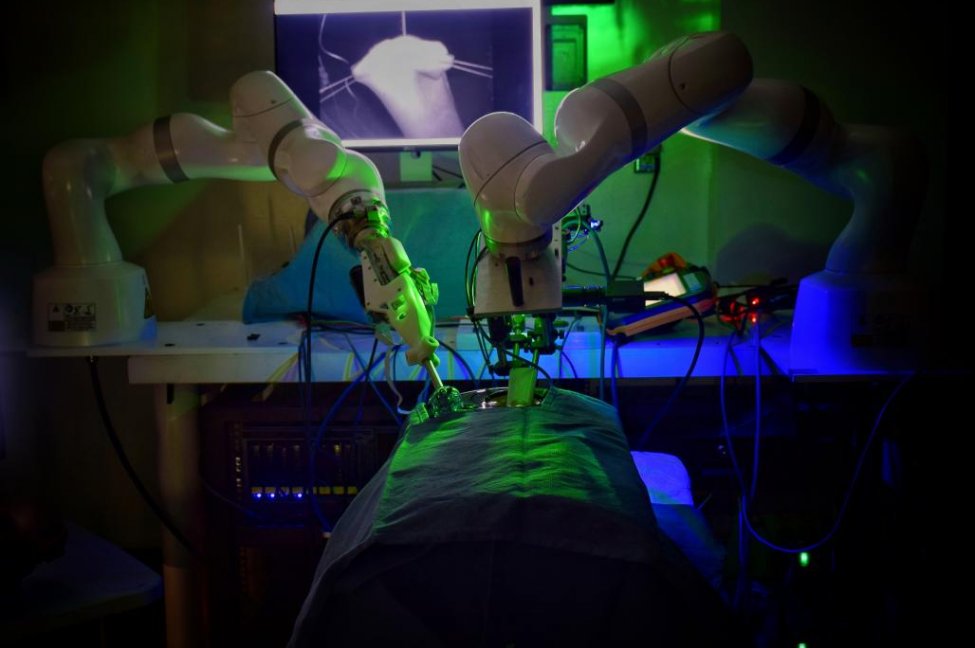The smart tissue autonomous robot performs laparoscopic surgery on the soft tissue of a pig without human assistance. Photo courtesy of Johns Hopkins University
Jan. 26 (UPI) — A robot has performed a small-incision, camera-guided surgical procedure on the soft tissue of a pig — a milestone researchers involved in the trial described as a step closer to fully automated operations on humans.
In an article published Wednesday by the journal Science Robotics, researchers from Johns Hopkins University in Baltimore described how a specially designed robot, nicknamed STAR, was able conduct the laparoscopic surgery without human assistance.
It marks the first time a robot has been able to perform the challenging procedure without human help, the researchers said.
Laparoscopic surgery uses small incisions and camera technology to perform procedures in the abdomen, including those involving the stomach, gall bladder and intestines, according to the American Society of Colon and Rectal Surgeons.
The robot performed an intestinal anastomosis, which involves connecting two ends of an intestine — a procedure that requires a high level of precision, the researchers said.
“Our findings show that we can automate one of the most intricate and delicate tasks in surgery, [including] the reconnection of two ends of an intestine,” Axel Krieger, one of the researchers involved in the project, said in a press release.
“The STAR performed the procedure in four animals, and it produced significantly better results than humans performing the same procedure,” said Krieger, an assistant professor of mechanical engineering at Johns Hopkins’ Whiting School of Engineering.
Researchers worldwide have been exploring robotic technologies to perform difficult surgeries that require repetitive movements and high levels of precision, including heart procedures.
The technology would not necessarily replace human surgeons, but provide assistance and support as needed, experts say.
Krieger and his colleagues at Johns Hopkins and the Children’s National Hospital in Washington, D.C., developed STAR, which stands for smart tissue autonomous robot, to perform camera-guided soft tissue suturing, they said.
The current version of the technology improves on a 2016 model that repaired a pig’s intestines accurately, but required a large incision to access the intestine and more guidance from humans, they said.
The newer device includes specialized suturing tools and state-of-the art imaging systems, with a three-dimensional endoscope, or tube-like camera, that provide more accurate visualizations of the surgical field, according to the researchers.
It also features a new control system that can adjust the surgical plan in real time, just as a human surgeon would, the researchers said.
“What makes the STAR special is that it is the first robotic system to plan, adapt, and execute a surgical plan in soft tissue with minimal human intervention,” Krieger said.
As the use of laparoscopic surgeries increases, robot surgeons could be used to assist their human counterparts and provide “more accuracy and precision in every patient independent of surgeon skill,” he said.
